Many people don’t tend to think of plants as living things in need of feeding. This feature tends to stand out more in animals, what with their gaping mouths and (sometimes) teeth.
But plants need to be fed as well, even the ones that aren’t carnivorous. They need nutrients that their roots can take up for use in growth and development, and some absorb nutrients chiefly through their foliage.
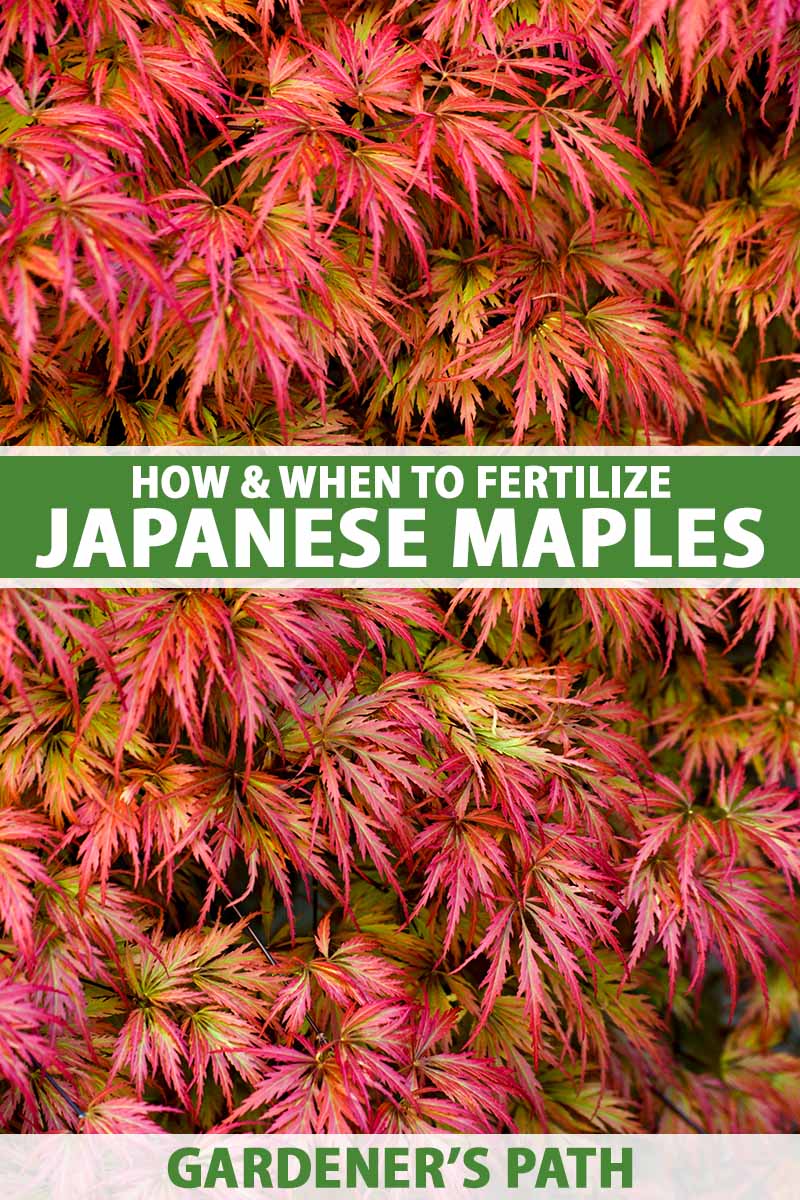
We link to vendors to help you find relevant products. If you buy from one of our links, we may earn a commission.
The Japanese maple is one such plant, and nutrition provided at the root level is key. As gardeners trying to cultivate this type of tree, it’s our job to provide all that it needs, which occasionally includes some extra fertilization.
We’ll cover everything you need to know in order to fertilize an Acer palmatum properly. Going over the why, what, when, and how of feeding Japanese maples is sure to be a grand old time!
Here’s what’s on tap for this guide:
What You’ll Learn
Why Fertilize Japanese Maples?
A well-cultivated landscape can require quite a bit of work on the part of the gardener, and it’s important to understand why fertilization is beneficial to these trees before you begin.
This will help keep the exasperation at bay as you add yet another task to an already long list of garden chores!
Aesthetics
A plant that’s provided with optimal nutrition will have a more pleasing appearance than it does when its nutrition is lacking.
Macro- and micronutrients, as well as sunlight and water, are necessary ingredients for the growth and metabolic processes that occur inside plants.
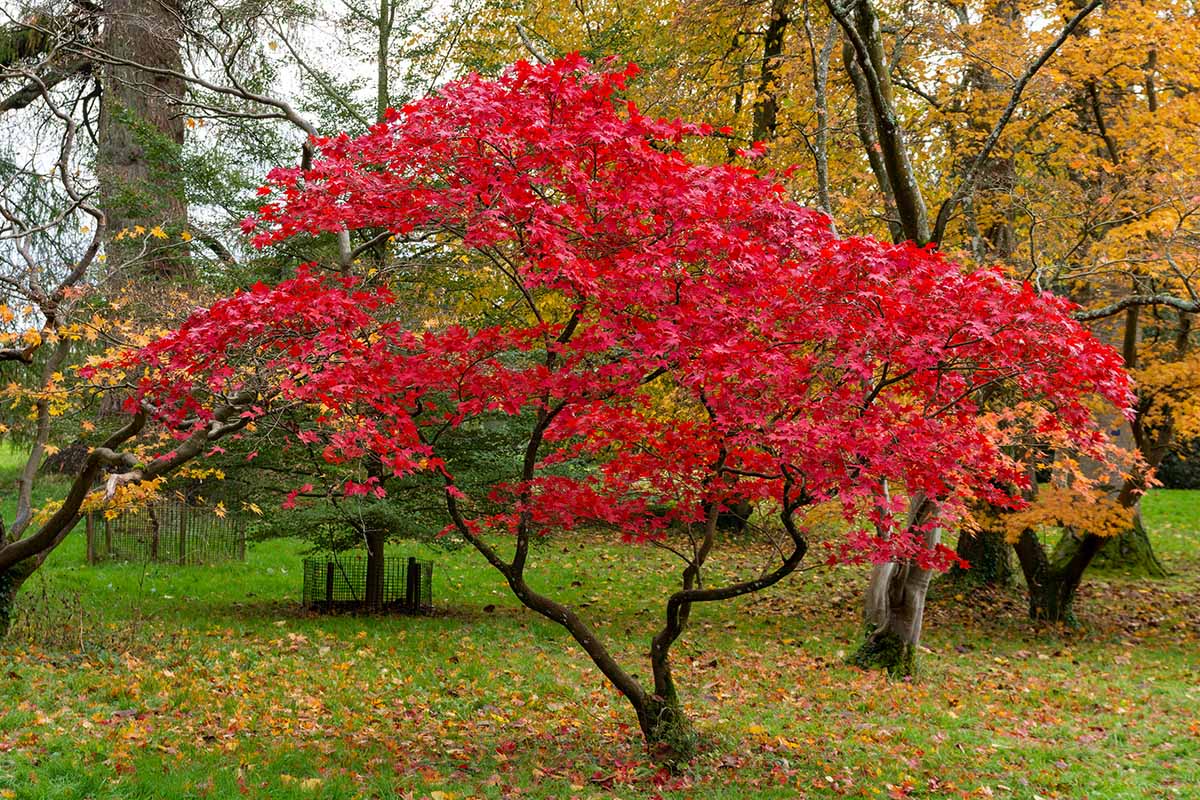
When all of these physiological functions are running smoothly, the plant isn’t lacking any of the key building blocks for developing beautiful flowers, stunning foliage, and vibrant bark.
A malnourished plant, on the other hand, won’t have the resources necessary to function, so it’ll look a bit under the weather at best, or sickly at worst.
Vigor
Much like with animals, malnutrition often leads to stunted growth in plants. Certain nutrients are needed for building key molecules like proteins, ribozymes, and chlorophyll.
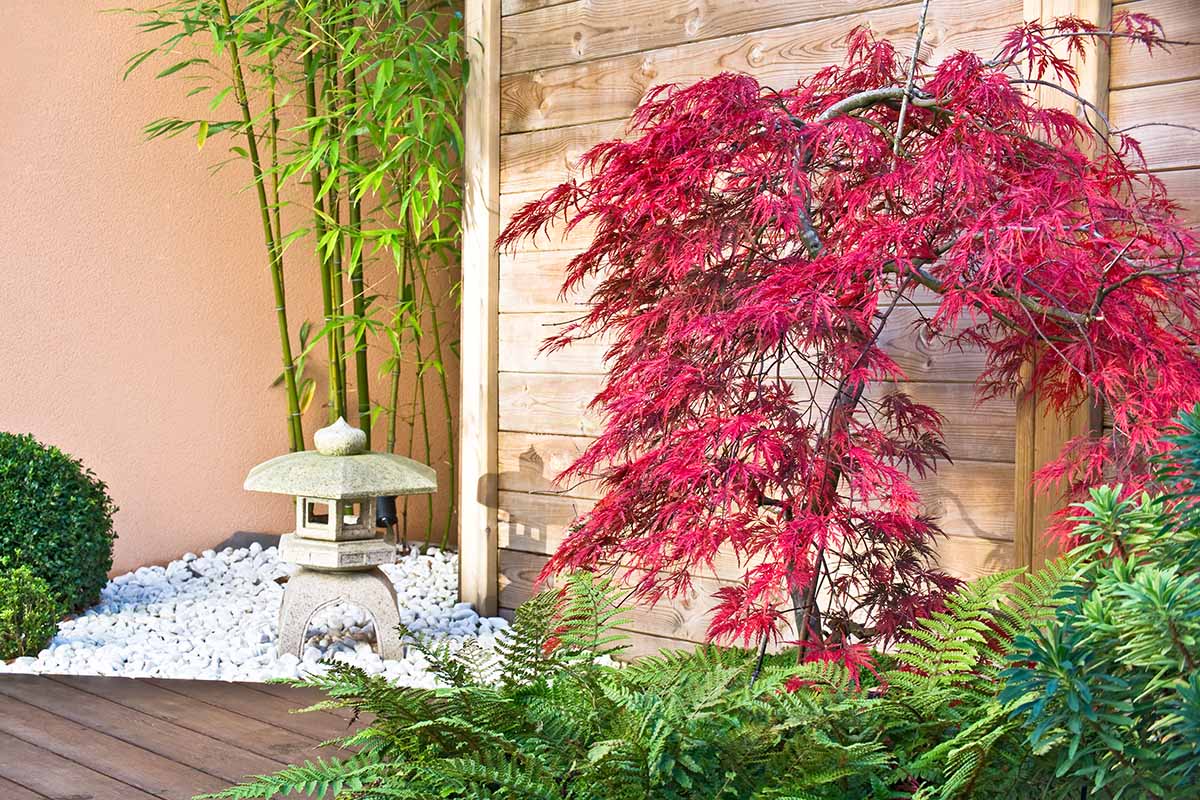
Without these key components, healthy cell function can’t occur, and this is made apparent to us with slow, reduced growth overall.
Health
Proper nutrition also aids in disease and insect resistance.
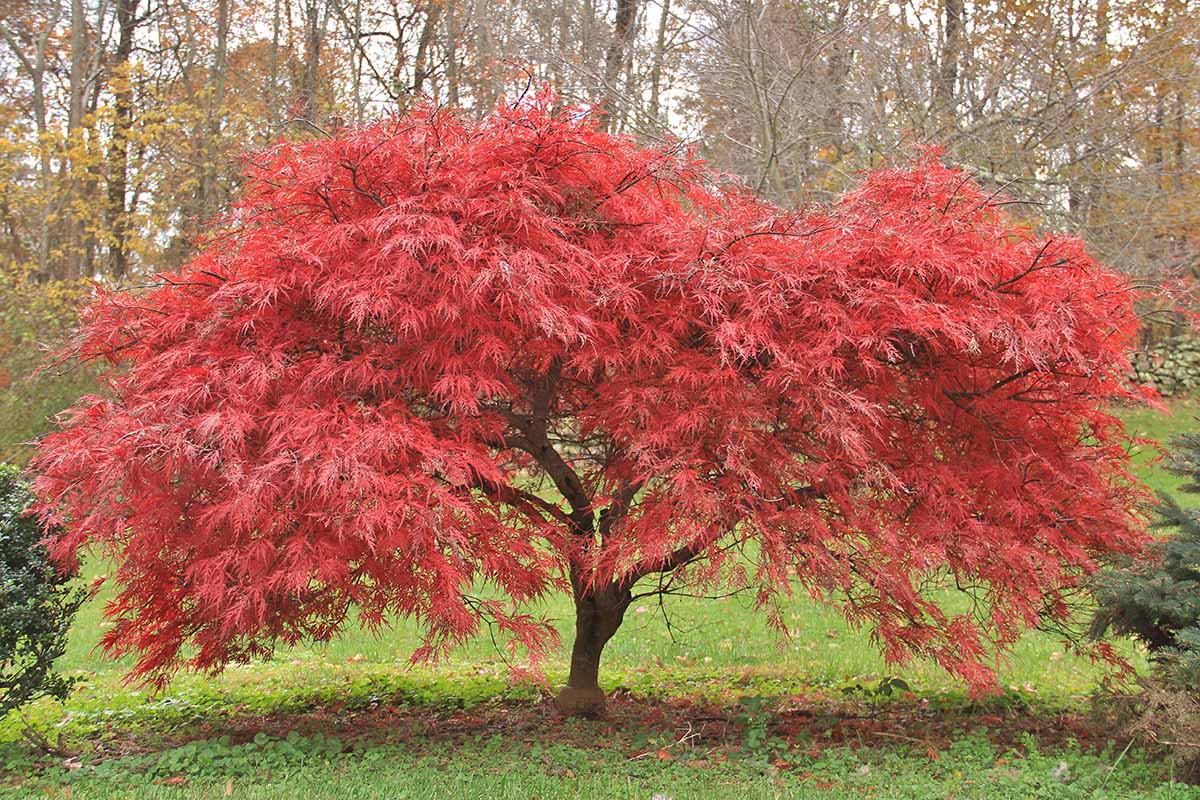
When a plant is missing essential nutrients, it perceives this as a stressor. Since biological organisms can only tolerate a finite amount of physiological stress, the stress of malnutrition leaves the plant less able to cope with infections and infestations.
But when a plant has all the nutrition that it needs, it has a much better chance of successfully defending against pathogens and pests.
What You’ll Need
So you’re now on board with fertilizing – awesome! Here are some things that will help you on your quest:
Humus
Also known as organic material, humus is what’s left after plant and animal matter decays. Whether it collects in a compost pile or is simply found in nature, humus improves a soil’s nutrition, structure, ability to hold water, and cation exchange capacity.
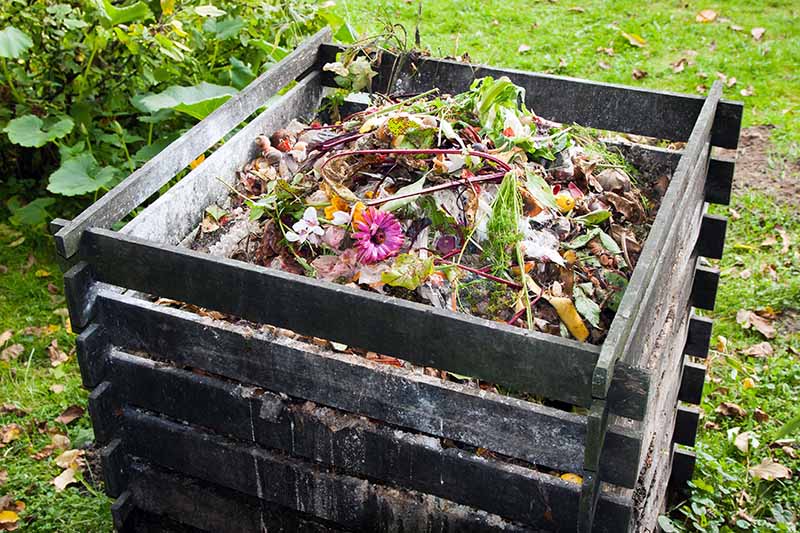
Cation exchange capacity (CEC) isn’t a measure of nutrition in the soil, but rather, a property describing its mobility, or capacity to provide nutrition to plants. These concepts sound similar, but they’re not the same thing.
See, nutrients such as potassium and calcium are positively charged ions, i.e. cations, and opposites attract.
In a growing medium, these cations stick to negatively charged humus particles and other types of organic matter with a very high CEC, and heavy soil particles with a high CEC, such as clay.
When roots burrow through the ground, they absorb these nutrients. Sandy soils, on the other hand, have a very low CEC.
The more humus there is in the soil, the more positively-charged nutrients the soil can hold onto, and the greater the amount that a plant can absorb from said soil.
But there’s a subtle difference here from how many nutrients are actually present – what we’re talking about is nutrient mobility, as opposed to total nutrient content.
Keep in mind that CEC has no bearing on negatively charged ions, or anions, such as nitrates. These forms of nitrogen are taken up by plants as well. But the ability to exchange anions, since they’re negatively charged ions, isn’t relevant to calculating CEC.
Negatively charged plant nutrients aren’t readily attracted to soil particles, but they’re readily carried away by rain and supplemental irrigation.
Well, except for phosphorus. It has a negative charge but it’s not readily water soluble. Nonetheless, it can still bind with soil particles and move with runoff.
All this to say, humus is important. Compost, well-rotted manure, and peat moss are all examples of humus that you can add.
Fertilizer
Fertilizer allows gardeners and farmers to add nutrients directly to the soil thoughtfully and meticulously. This is ideal for when the growing medium has a specific deficiency that you’re trying to resolve, and as it becomes naturally depleted over time.
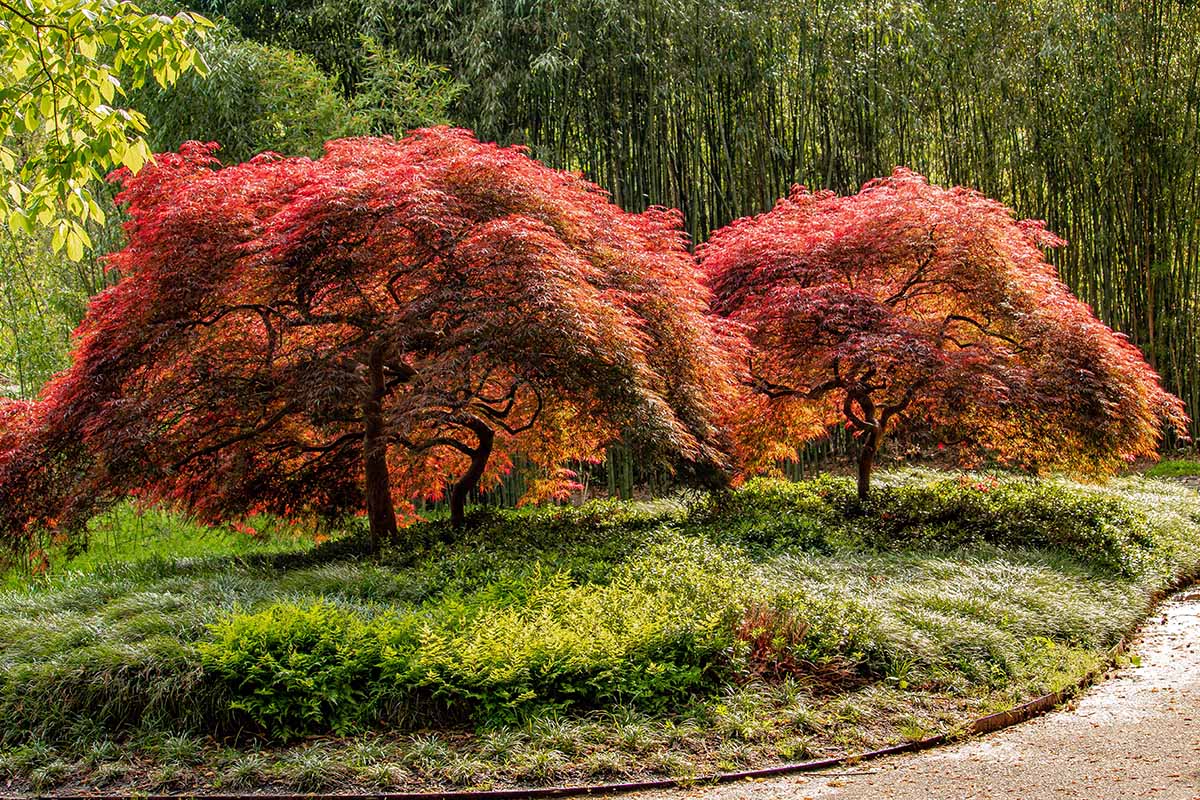
Those negatively charged nutrients will move readily through soil, and positively charged nutrients will also move quickly through sandy soils and other types that are devoid of organic material, with a low CEC.
There are two types of fertilizers for gardeners to choose from: organic and synthetic.
Organic fertilizer uses naturally occurring materials, such as bone meal, kelp meal, and bat guano.
These organic fertilizers have the fringe benefit of often providing secondary and/or trace nutrients that are also naturally present, which’ll help in providing balanced nutrition to your trees and other plants.
Synthetic fertilizers also provide nutrients, but in the form of mined or manufactured compounds such as potassium nitrate and ammonium phosphate.
These products are great at providing plant macronutrients – readily bioavailable forms of nitrogen, phosphorus, and potassium (NPK) – but don’t typically offer much in the way of secondary (or macro-) and trace nutrients such as calcium and iron. This can lead to potential toxicities as well as deficiencies.
It’s best to go with organic over synthetic, when possible.
Synthetic fertilizers tend to have a nasty side effect of disrupting the soil microbiome, meaning all those beneficial microscopic organisms that are present won’t be able to lend their tiny helping hands in keeping your garden healthy.
Organic fertilizers, on the other hand, provide nutrition without harming said microorganisms.
Soil Test
Whether it’s achieved via a do-it-yourself test kit or a hired expert, having your soil properly evaluated in order to determine its nutritional levels is important.
How will you be able to fertilize properly without knowing what’s lacking, if there are issues afoot?
For the opinion of a pro, enlisting the help of university extensions or professional services is the way to go.

For self-testing, Luster Leaf offers a DIY soil test kit that reveals nitrogen, phosphorus, and potassium levels, along with pH. You can purchase this kit on Amazon.
When and How to Feed Your Trees
Before you plant or transplant a Japanese maple, make sure you add two to four inches of organic material – particularly if a soil test deems it necessary – into the soil around the planting site.
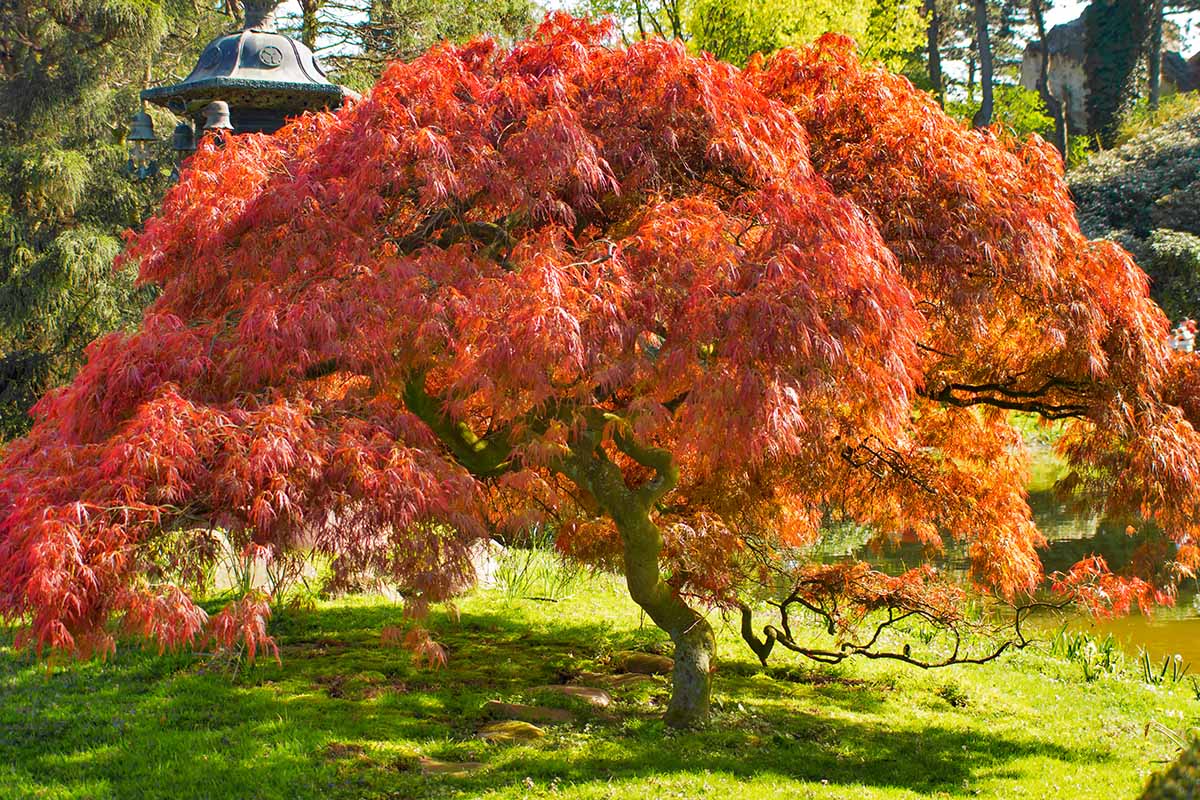
Do this by breaking up the soil, adding the humus, then mixing it all up via cultivation. This amendment will improve soil texture and porosity while boosting nutritional content and aiding nutrient mobility.
Don’t fertilize an A. palmatum during its first growing season after planting.
The roots won’t be established, or developed enough for them to adequately uptake the sudden flush of nutrients. Your trees will be better off if you wait a year to provide any supplemental food.
As with most plants, Japanese maples should be fertilized in early spring, right before the leaves emerge. That way, the nutrition in the root zone is “topped off,” per se, and available to support that first flush of springtime growth.
For each annual round of general feeding, you can go the humus route, or the straight-up fertilizer route.
If you opt for humus, you’ll want to work two to four inches of an organic material such as well-rotted manure or compost into the soil above the root zone.
For the commercial fertilizing option, Osmocote offers a slow-release, 19-6-12 (NPK) granular fertilizer in eight-pound bags that’s available at The Home Depot.
Osmocote Plus Smart Release Plant Food
It’s suitable for feeding these trees because it’s fortified with 11 essential plant nutrients and guaranteed not to burn plants – when applied according to package instructions.
Need to figure out where your tree’s root zone is? Critical roots typically run just outside the drip line, or the perimeter line where water might drip from your tree’s canopy when it rains.
For something a bit more exact, you can roughly map out the root zone with some simple math:
For most trees, the radius of the root zone increases by about 18 inches for every inch of trunk circumference.
Grab a tape measure and take the circumference of the trunk in inches from about four feet above the ground. Divide this number by π (~3.14) to get the diameter of your tree’s trunk, then multiply the product of that calculation by 18.
Divide the resulting value by 12 to convert from inches to feet, and you have the radius of the root zone extending away from the trunk in feet.
With that number in mind, measure out the radius value from the trunk four times, with each measurement at a 90° angle from the next like the four cardinal directions on a compass. Draw arcs connecting the four points – the resulting circle is your root zone.
If the foliage of your Japanese maples is sporting some sickly-looking chlorosis – a common sign of a manganese, zinc, or iron deficiency – or you suspect another nutritional deficiency of some kind, a soil test will reveal the specific nutrients that are lacking.
They can usually be supplemented piecemeal, but the need for this is highly unlikely, since A. palmatum typically doesn’t need a ton of fertilizing.
In fact, going too hard with the supplementation may cause over-fertilization, which comes with its own host of issues such as leaf browning and foliar burn.
Interestingly enough: manganese, zinc, or iron deficiencies in maple are more readily solved in the long-term by lowering the pH of the soil, since these minerals aren’t as available in alkaline soils.
Be Wise and Fertilize
Providing the proper nutrition can make or break a plant, and the Japanese maple is no exception.
A. palmatum is a beautiful tree, and it deserves to look its best and be at its healthiest. And now, you have the power to help this Acer along in this way. How cool is that?
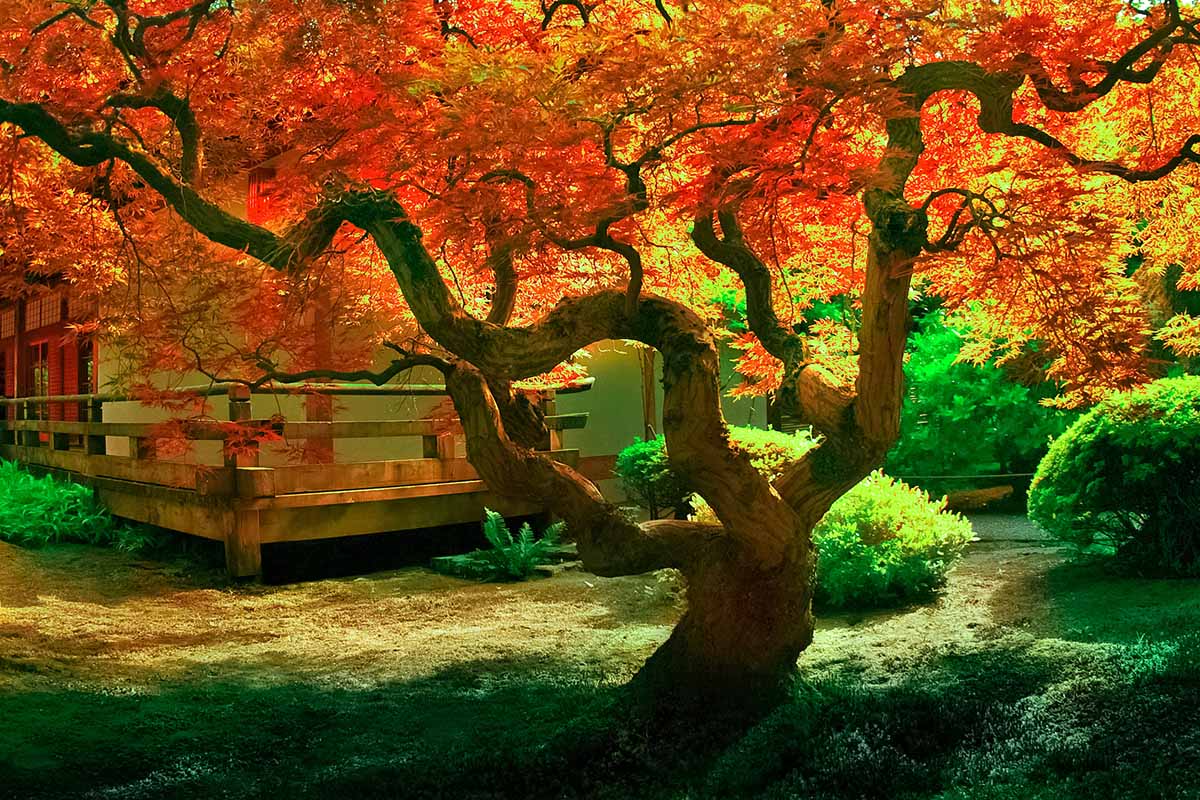
Any remarks or questions can go in the comments section below! I’d love to read what you all have to say.
For even more Japanese maple know-how, enjoy reading these guides next:
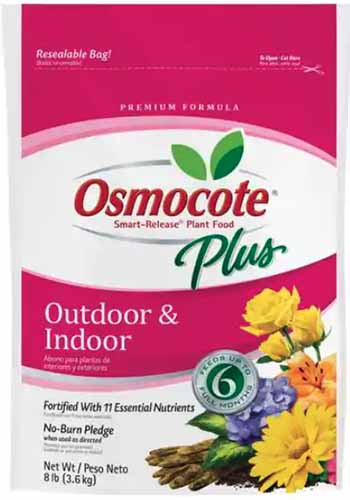
Great article. I work at a retail nursery. Lots of information on soil makeup and functioning. We are constantly educating folks on where to water– over the roots and not on he plant. Good advice, not fertilizing the first year. Getting assistance from agricultural extension. Many local nurseries carry needed products also. Nice article.
Thank you! Glad you liked the article!
I think maybe you meant to write the radius of the root zone increases by 18 inches for every inch of the tree’s diameter. That seems to be what is implied by the subsequent calculations anyway.
My aunt has had a Japanese maple that was given to her in a pot 10 years ago and that’s where it stayed until I planted it this past summer. Our soil here is rather sandy. The tree is only about 4ft tall and still really thin and doesn’t look like it’s growing but it also doesn’t look like it’s dying either…..what should I do to help it grow? Keep in mind we’re working in a fixed income. Thanks in advance,
Jerrica Lowe
A full-scale amendment of your entire garden would certainly be very pricey… but thankfully, making conditions more favorable for a single plant shouldn’t break the bank. Sandy soils tend to leach water and nutrients pretty quickly, so working few inches of compost or manure into the root zone every spring will help improve a sandy soil’s water-holding capacity. Additionally, maintaining a mulch layer will help prevent further water loss by conserving soil moisture. Since sand isn’t nutrient dense, a slow-release granular fertilizer is oftentimes necessary. As with irrigation, you’ll want to apply the fertilizer in smaller, more frequent doses than… Read more »
I Planted in my yard 6 dwarf Japanese maples late November 2022.
I wait a yr to fertilize … Correct ?
I water regularly to keep soil moist.
input appreciated to sustain my trees.
A Japanese maple probably won’t be established enough for adequate fertilizer uptake in it’s first year after planting, so yes, I’d wait to fertilize until the start of its second growing season after planting.
And yes, a Japanese maple benefits from moist soil in the first few years after planting.
Best of luck to you! I’m sure you’re trees will turn out to be gorgeous!
I bought this Japanese maple 1 week ago, paid a lot of money. The foliage is now dry and crackly. What can I do?
Hi Jeanette- I was able to retrieve your photos. Where are you located, and what has the weather been like since you brought this plant home? How often have you watered it over the past week? Did the nursery provide any recommendations or planting instructions, and do they guarantee their plants? Besides the desiccated foliage, does it show any signs of pest damage or disease? Saplings in nursery pots require more water and protection from the elements than those planted in the ground and it’s typically best to get them transplanted right away so they can begin to acclimate to… Read more »
What soil should I purchase for my Acer Palmatum seeds?
I’d look for a soil that’s designed for seed-starting, i.e. a lightweight media that retains moisture while also allowing for drainage. Alternatively, you could make your own seed-starting mixture yourself… something like a 50:50 mix of peat moss and perlite would work very nicely.
I just received my Acer Palatum seeds in mail….can I sow them now?
I wouldn’t recommend it, as the seeds will need to be stratified for three or so months prior to sowing… and by the time the seeds are stratified, germinated, and developed enough for transplanting outdoors, it might be too late for them to harden off and establish themselves outdoors before the first frost. Personally, I’d stratify them during this upcoming winter so that they’re ready for sowing come spring. See the propagation section of our guide for more tips.
We just moved in a house with a beautiful maple tree, currently at the end of April in Southern California, with full leaves. Should I skip the fertilizing this year? Or is there a second best time to fertilize it?
Congrats on the move, Cheri! Spring in SoCal is absolutely gorgeous!
Early spring is typically the optimal fertilization time, but mid-to-late spring is still an effective time, and it’s definitely not too late! If you were to wait on fertilizing until summer, though, I would only do so if the tree was/will be free from summertime heat and drought stress, since it’ll need all the water it can draw up in order to make absorb and utilize all those nutrients for growth!
I have a 40 year old threadleaf maple whose leaves are starting to turn yellow at the crown. It has been dry so I am now watering it regularly. It is fertilized annually as part of an overall property program. What should I be looking for? What else can I do?
Hello, Gordon!
It sounds like you’re doing the right thing with regular watering. Has your tree’s exposure changed recently, i.e. you’ve removed a nearby, taller tree that could have been providing shade?
I wouldn’t necessarily suspect disease at this point, it sounds like dryness is the most likely culprit. But it never hurts to keep a close eye on the tree in the meantime. Don’t hesitate to reach out again, if further symptoms develop!
I just bought a Sharp’s pygmy Japanese maple. It’s still in the pot, the three that were available at the Garden Center seemed neglected. I had someone water them before I picked one out on a100 degree day. I’ll be planting it next week after I get my dog’s ashes. Is this a very terrible time to plant this tree? Can I support it in the pot by adding soil or something while I’m waiting ?I have a nice Shady spot. I don’t have the greenest thumb, and I’m a little bit anxious about planting this memorial tree. I already… Read more »
Hey, Linda! I’m sorry to hear about your dog… While transplanting in summer is doable, harsh summertime conditions makes it a bit riskier than transplanting in early spring or late fall instead. If you choose to transplant the tree in the next week, you’ll have to be super militant about keeping the transplant well-watered, since it doesn’t have the established roots necessary to handle drought stress like an already-established plant. Honestly, I’m a bit hesitant to recommend transplanting at all in heat that’s over 100 degrees, although you could certainly try. If you wanted to wait until fall (when it’s… Read more »